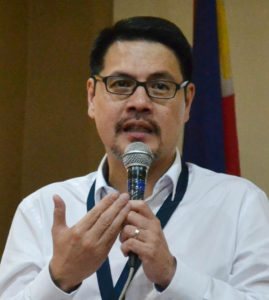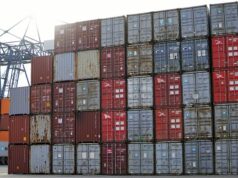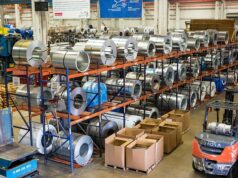 This is the second in a series of articles on the Philippine Customs Modernization and Tariff Act.
This is the second in a series of articles on the Philippine Customs Modernization and Tariff Act.
For Series 1, click here.
Preliminary Work. Sometime in 2007, the Philippine Bureau of Customs (BoC) announced that the Revised Kyoto Convention (RKC) will be adopted before the end of the year and that the same will be implemented in the coming years. Known formally as the “The International Convention on the Simplification and Harmonization of Customs procedures (Kyoto Convention)”, the original convention entered into force in 1974.
In November 2007, BoC created an RKC Management Team to push for accession to the convention and to lead the implementation of the RKC by preparing measures to ensure compliance with the international agreement. Based on a study conducted at that time, only about 55% of existing customs laws and regulations were compliant with international customs standards.
Among the measures identified for the RKC implementation strategy were the following:
- Support for the Senate ratification of the RKC and approval of legislative measures;
- Drafting of the omnibus bill to amend the Tariff and Customs Code of the Philippines (TCCP);
- Drafting of the Manuals of Operations to govern the main areas in customs operations (entry processing, customs bonded warehouse, administrative and judicial proceedings, transit goods, etc.);
- Infrastructure support (e.g. Information and Communication Technology); and
- Provision for human resource training, capacity building and change management.
What is the RKC? In order to meet the growing demands of governments and the international trading community, the original convention was revised and updated in June 1999. The World Customs Organization (WCO) Council adopted the RKC as the model for efficient and modern customs procedures in the 21st century. To date, there are 105 countries which are signatories to the convention.
RKC was designed by the WCO to standardize and harmonize customs policies and procedures worldwide. It likewise serves to implement customs-related principles developed by the World Trade Organization (WTO), such as the agreements contained in Article V (Freedom of Transit), Article VIII (Fees & Formalities Connected with Importation and Exportation) and Article X (Publication & Administration of Trade Regulations) of the GATT 1994. As a whole, the convention provides a comprehensive set of over 600 legal and technical provisions outlining the basic principles of modern customs procedures and practices.
International Standards. Foremost among the governing principles of the RKC is the requirement that customs should provide transparency and predictability for the importing, exporting, logistics, transport and forwarding industries. The convention promotes trade facilitation and effective controls through its legal provisions that detail the application of simple yet efficient procedures.
Specifically, the RKC provides core principles for the following:
- Predictability (standard principles for customs processing of goods, conveyances and persons moving across borders – clearance procedures)
- Transparency (provides all information relating to customs)
- Legal (prevents arbitrary or unfair actions by customs)
- Use of Information Technology
Initial Drafts. As an external consultant for the BoC RKC Management Team in 2008, we assisted BoC in drafting a bill, with the main purpose of incorporating the principles and provisions of the RKC into the TCCP. For the next 12 months, the team focused on writing the draft provisions and the revision of old provisions found inconsistent with the RKC.
By the middle of 2009, a draft was submitted to the BoC management and soon thereafter, a draft bill was filed in Congress, then entitled “Customs and Tariff Modernization Act” (CTMA). The bill was not passed by the Lower House by the end of its term. In 2010, several versions of the CTMA were filed in both houses. The Lower House was able to approve its version but the Senate failed to act on such bill.
CMTA – RA 10863. In 2013, new versions were again filed. In the early part of 2015, after the conduct of numerous public consultations in the Lower House, a technical working group was created. The TWG was chaired by Rep. Sharon Garin and was composed of representatives from the House Committee on Ways and Means, BoC, Department of Finance and external consultants.
For the next 6 months, the TWG worked on the consolidated bill, taking into consideration the adoption of the provisions of both the RKC and the WTO Trade Facilitation Agreement (TFA), the revision of all other old provisions and the inclusion of anti-smuggling provisions. By the middle of 2015, a consolidated bill (now entitled ‘CMTA’ instead of ‘CTMA’) was submitted to the mother committee in the Lower House and by the third quarter of 2015, the bill was approved by the mother committee. At about the same time, the Senate Committee on Ways and Means also started conducting its public hearings.
In the last quarter of 2015, both houses approved the CMTA and work started on the harmonization of the House and Senate versions. In January 2016, the bicameral committee convened. On January 21, 2016, both houses ratified the final version and thereafter, the same was transmitted to the Office of the President. On May 30, 2016, Republic Act No. 10863 was signed and approved by the President.
The author is an international trade, indirect tax (customs) and supply chain expert. He provides advisory and training service to most of the top corporations and industry associations. For questions, please email at agatonuvero@customstrade.asia or agatonuvero@yahoo.com.












